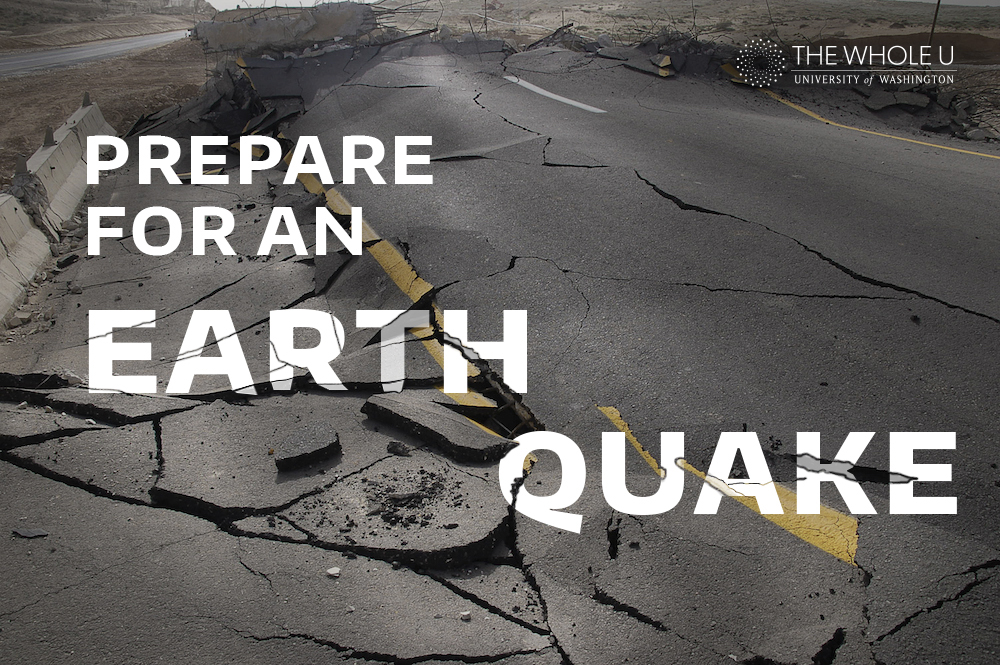
How to Prepare for an Earthquake
I am woefully unprepared for an earthquake.
This is a problem because all three UW campuses are near a surface fault. And as the infamous New Yorker article warned, “we now know that the odds of the big Cascadia earthquake happening in the next fifty years are roughly one in three. The odds of the very big one are roughly one in ten.”
If disaster strikes, we need to rely on each other. Help will come eventually, but our infrastructure will be damaged or destroyed and first responders will be overwhelmed. Luckily for us, Siri-Elizabeth Mclean, the plans and training manager at the UW Department Of Emergency Management, shared how to prepare for an earthquake.
Here are some free steps you can take today to prepare:
Create a plan with your family
If an earthquake strikes in the middle of a workday, what’s your plan? Assume that bridges will be inaccessible and walking on foot is the fastest/safest way to get around. Will you meet your loved ones at home, or does somewhere else makes sense?
Keep written contact numbers with you at all times
A Seahawks win can overload our phone circuits, so it is unlikely that you’ll be able to reach anyone local if an earthquake hits. However, it’s often possible to call someone out of state because their networks are open. Decide who should be your emergency contact and keep their number with you at all times. That way, you can use a landline or any cell phone that works to contact one key person. If all your family members are prepared to contact this same person, your emergency contact can let you know who they’ve heard from and offer immediate peace of mind.
Hold a drill
Did you know the safest place in most offices is under a desk? Emergency preparedness experts like Siri no longer recommend going into a doorway, because of the high risk of being injured by the door or flying objects. Instead, get low and cover your head. Hold a drill so that everyone you work with is informed — and doesn’t have objects blocking them from using their desk as shelter.
Request a mitigation walk through
Will a bookshelf crash into you? Block an exit? UW’s Emergency Management offers free evaluations of UW offices and workspaces to help you mitigate risks. They came to The Whole U office and I learned what to look out for, which is great training to take home as well. Email disaster@uw.edu to schedule a walk-through.
Sign up for UW alerts
Stay informed by signing up for notifications via text message and email.
That is just the low-hanging fruit. Other steps you can take include learning CPR and creating an emergency preparedness kit. According to Siri, we need to be prepared to be on our own for 7-10 days. How would you access clean drinking water if your taps didn’t work? What would you eat? Do you have any cash on hand if stores stop accepting plastic? Learn more about creating a supply kit here.
Thanks to Siri, I feel good knowing that I have a plan and at least I know what I need to work on. I’ve started building an emergency kit to add to over time.
If you’re ready to learn more, UW Emergency Management offers free preparedness courses, including a video of Siri’s presentation. Together we will get through whatever comes our way!